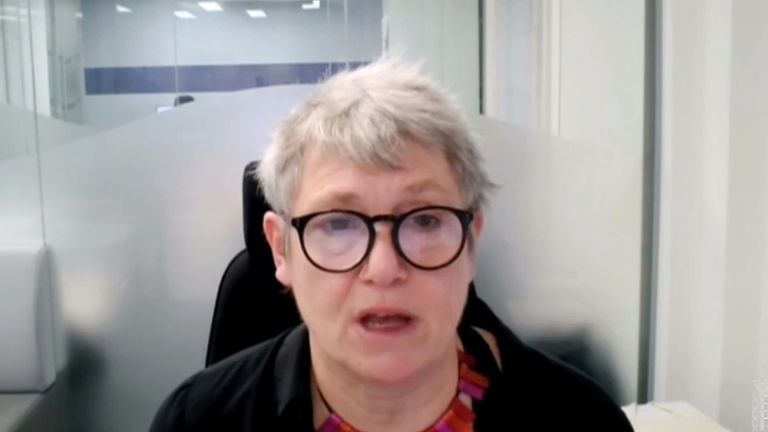COVID-19: Children as young as 5-years-old could be offered vaccine with decision ‘expected’ before Christmas
A decision on whether to vaccinate children as young as five against COVID could be made before Christmas, one of the government’s top advisers on vaccines has said.
Professor Wei Shen Lim, chair of the Joint Committee on Vaccination and Immunisation’s COVID-19 panel, said he would “expect” his team to offer their advice on jabs for those between the ages of five to 11-years-old before Christmas.
COVID case rates have been consistently high in school-aged children since September, but vaccines have only been offered to 12 to 15-year-olds since November – later than in many other countries.
US authorities have already approved the Pfizer vaccine for use on five to 11-year-olds.
Professor Lim was one of several experts to give evidence to the Commons science and technology committee on Tuesday.
Dame Kate Bingham, former head of the UK vaccine taskforce, also gave evidence and suggested that the UK needs to focus on producing tweaked jabs in anticipation of new variants such as Omicron – and other alternatives to injections.
“The virus is ahead of us,” she told the committee. “We need to stay ahead of the curve so we can produce variant vaccines in 100 days or less.”
She added: “The other area we must be pushing forward with is the format of these vaccines – so that they are easier to deploy.
“Patches, pills or sprays – whatever it may be. We need to look at delivering them in a way that doesn’t cost the country billions to put them in people’s arms.”
Follow the Daily podcast on Apple Podcasts, Google Podcasts, Spotify, Spreaker
NHS leaders have repeatedly warned of the dangers of shifting focus solely to delivering booster jabs, with one COVID ICU anaesthetist describing it as “pushing scant resources elsewhere”.
MPs also heard from Dr Paul Burton, chief medical officer of vaccine manufacturer Moderna, who said that despite early reports, he believes the Omicron variant could be just as severe as Delta.
“If we could have a far less dangerous COVID virus that would be a good thing, but I don’t think Omicron is a milder, less severe version of the current virus,” he said.
He drew on hospital admission rates in Denmark, which are currently on a level, if not higher than Delta.
Dr Burton also suggested that people could be infected with Omicron and Delta at the same time – saying in the coming months the two variants will “co-exist”.
He said this risks the viruses “sharing genes and swapping them over”, which could give way to further mutations.
Moderna is working on an Omicron-specific vaccine, he added, but only “small amounts” would be available by March or April 2022.
Until then he stressed that regular handwashing, mask wearing, social distancing and booster vaccines are the best way to tackle the variant.
The committee heard from the chair of the South African Medical Association Dr Angelique Coetzee, who was among the first clinicians to detect Omicron there.
She was more optimistic about Omicron’s severity, claiming the “dominant picture” in South Africa so far is one of “mild disease” outside of hospital.
Dr Coetzee said between 80% to 90% of Omicron hospital patients were unvaccinated but intensive care wards do not have the sequencing ability to tell which ICU patients have Omicron or Delta.
She added that most vaccinated people with Omicron are recovering within five to seven days and the unvaccinated felt symptoms more intensely.
Experts have repeatedly stressed that the UK population is older and different to South Africa’s and that any comparisons should be made with caution.
Lastly, the committee heard from the chief medical adviser and head of data and analytics at the UK Health Security Agency (UKHSA).
Dr Susan Hopkins said Omicron’s doubling rate of two to three days was “shortening not lengthening”.
Analysis by Thomas Moore, science correspondent
But her colleague Professor Steven Riley said there would be a natural limit to how long that rate would be increased for.
“People tend to adapt their behaviour and movement – and the rate slows down,” he said.
Source: Read Full Article







